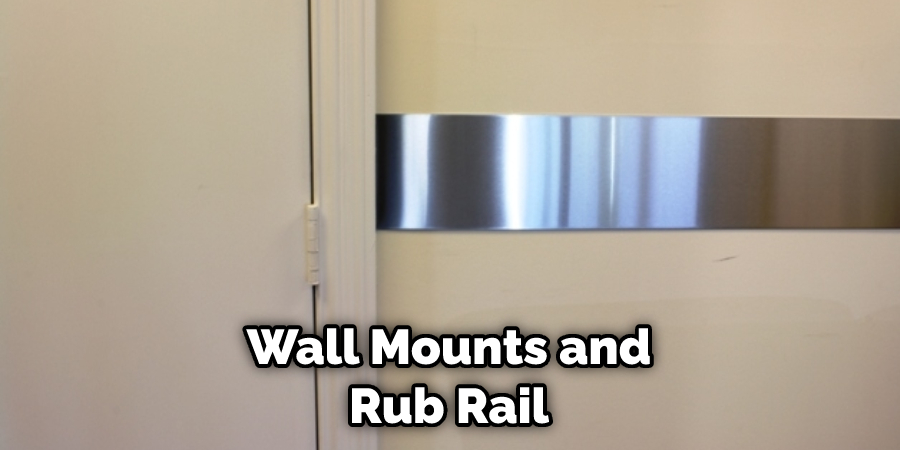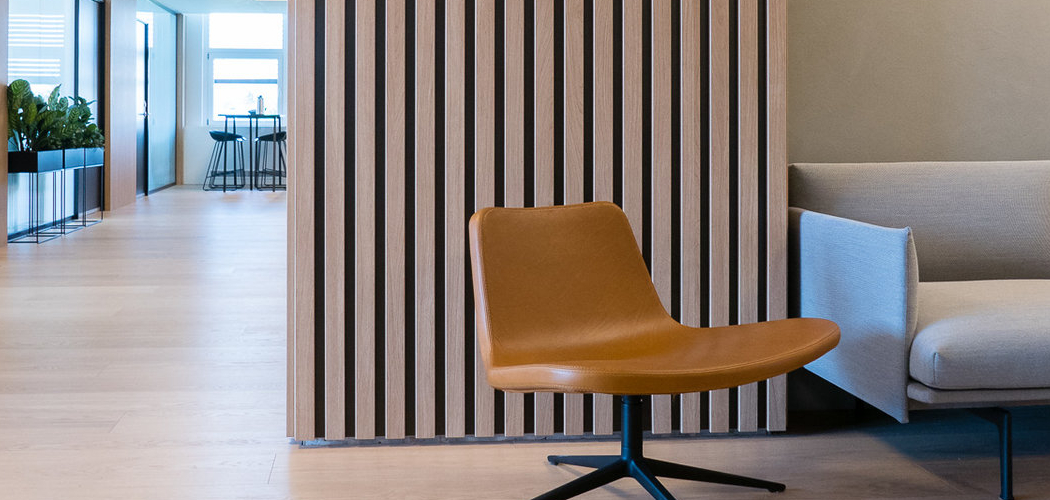Are you worried about the walls in your home becoming damaged due to chairs being pushed against them? Whether it’s a desk chair that is continually being scooted up and down a hallway or dining room chairs that keep getting kicked out from under the dinner table, wall damage can occur without proper protection.

The good news is that there are simple, inexpensive ways to protect your walls and prevent unsightly scuff marks. Here, we’ll discuss how to protect walls from chair damage by using materials such as felt pads or chair rail moulding so your walls stay looking new for years to come. Read on for advice on how to effectively shield your walls from peeling paint and dents!
Having furniture in the home adds convenience, comfort, and style. However, when moving items around or pushing chairs back from a dining table, you may find that your walls can become quickly damaged. Protecting the walls of your home from chair damage is critical for maintaining its beauty over time – this blog post will give some helpful advice on how to save your paint job and make sure the wall surface remains intact without getting scuffed from chair wear and tear!
What Causes Chair Damage in Walls?
There are many reasons why chair damage can occur in walls. Such as:
1. Improper Installation
One of the most common causes of chair damage in walls is improper installation. When installing chairs against a wall, it is important to use the correct type and length of screws or anchors to ensure they are properly secured.
2. Excessive Weight
Another cause of chair damage in walls is excessive weight. If you have chairs that are too heavy for your walls, they can cause them to buckle and break over time.
3. Exposure to Moisture
Exposure to moisture can also lead to wall damage caused by chairs. If your walls are exposed to water or other wet conditions, it may eventually lead to cracks or breaks in the wall caused by the chair’s weight.
4. Structural Integrity

Lastly, the structural integrity of your walls can be a factor in chair damage. In some cases, the walls may not be strong enough to support the weight of a chair and could cause it to break over time.
13 Ideas On How to Protect Walls From Chair Damage
Now that we have discussed the potential causes of chair damage in walls let’s look at how to protect them.
1. Secure the Chair Properly
The best way to avoid chair damage in walls is to make sure it is secured properly. Use the correct type and length of screws or anchors when installing chairs or wall-mounted shelving.
2. Add Padding to the Chair Feet
Add felt pads, furniture glides, or other types of padding to the feet of the chair to reduce impact when moving it around on hardwood floors and other surfaces. So if you’re dragging the chair around a lot, adding this extra layer of protection can go a long way.
3. Install Wall Mounts and Rub Rail Guards

Wall mounts and rub rail guards are great for helping to protect walls from chair damage. These can be mounted directly onto the wall and help ensure that chairs or shelves don’t slip or slide and cause damage.
4. Use Rug Pads and Door Mats
Rug pads and door mats are great for protecting your walls from chair damage. These soft materials can help absorb some of the impacts when chairs or shelves are moved around, which can help prevent scratches and dents in the wall.
5. Opt for Chairs With Wheels
Chairs with wheels can help reduce the amount of friction between the chair and wall, as they’re easier to move around. This means that there is less chance of wall damage when moving the chair around.
6. Use Wall Protectors
Wall protectors are great for preventing scratches and dents on walls from chair damage. These can be applied directly to the wall and help reduce the impact of chairs or shelves moving around against it.
7. Use Wall Guards
Wall guards are also great for protecting walls from chair damage. They’re usually made of plastic or rubber, and they’re designed to fit onto the corners of walls to absorb any impact from chairs or shelves.
8. Add a Chair Rail
Adding a chair rail is another great way to protect walls from chair damage. This can be installed on the wall, and it’s designed to help reduce the impact of chairs moving against it.
9. Invest in Furniture Sliders
Furniture sliders can be a great way to protect walls from chair damage. These are small discs or blocks of plastic or rubber that fit onto the bottom of chairs and help reduce friction when moving them around.
10. Use Plastic or Rubber Corner Protectors
If you’re concerned about chair legs scratching your walls, you can invest in some plastic or rubber corner protectors. These fit onto the corners of chairs and help to prevent any damage from occurring to your walls.
11. Stick Protective Strips on the Wall
Protective strips are also a great way to protect walls from chair damage. These have an adhesive backing and can be easily applied to the wall to help absorb any impact from chairs or shelves moving against it.
12. Install Wall Panels
Wall panels are also great for protecting walls from chair damage. These are usually made of plastic or rubber, and they fit onto the wall and help absorb any impacts when chairs or shelves are moved around.
13. Use Wallpaper or Other Wall Coverings
Wallpaper or other wall coverings can also help to protect walls from chair damage. These don’t have the same shock absorption capabilities as some other methods, but they provide a layer of protection that can help reduce scratches and dents in the wall.

By utilizing these 13 tips, you can effectively protect your walls from chair damage. Whether it’s using the right type of screw or anchor to mount chairs and shelves, adding padding to the feet of the chair, installing wall mounts and rub rail guards, using rug pads and door mats, investing in chairs with wheels, using wall protectors, adding a chair rail, installing furniture sliders, using plastic or rubber corner protectors, sticking protective strips on the wall, installing wall panels or using wallpaper or other wall coverings – there are a variety of ways to help protect your walls from chair damage.
So make sure to take the time to consider all of your options and find the best solution for you.
Frequently Asked Questions
How Much Can Wall Damage Be Caused by a Chair?
The amount of wall damage caused by a chair can depend on several factors, including the material of the chair and the wall, how often the chair is moved, and how much weight it bears. Generally speaking, chairs that are moved around frequently or bear heavy loads can cause more significant amounts of damage than those that stay in one place and bear less weight.
What Are Some Effective Ways to Protect Walls From Chair Damage?
There are several effective methods for protecting walls from chair damage, such as ensuring the chair has non-marking feet or casters, using felt pads on the bottom of the legs, replacing any worn-out or loose casters, and periodically checking the furniture for any wear and tear.
Additionally, placing a wall protector between the chair and the wall can help to reduce impact damage caused by repeated contact. Finally, keeping the walls clean and free of dust or debris may also help prevent scratches or other types of damage.
Are There Any Special Considerations When Protecting Wallpaper?
Yes, when protecting wallpaper from chair damage, it is important to take extra care. For instance, using adhesive furniture protectors can help prevent damage from the weight of the chairs, while felt pads and wall protectors may also be beneficial for reducing contact-related wear and tear. Additionally, checking for any loose threads, peeling, or damage to the wallpaper regularly can help prevent more serious issues.

Conclusion
Now you know how to protect walls from chair damage. You can use felt pads, chair bumpers, wall savers, and floor protectors to help reduce the wear and tear of your furniture on walls. Additionally, be aware that certain chairs may need heavier-duty protection, like corner guards, in order to prevent damage from occurring.
Make sure you monitor the condition of your furniture regularly so that you can catch any wear and tear before it becomes permanent. Finally, make sure to replace any furniture that is past repair. These steps can help ensure that your walls look beautiful for years to come!

